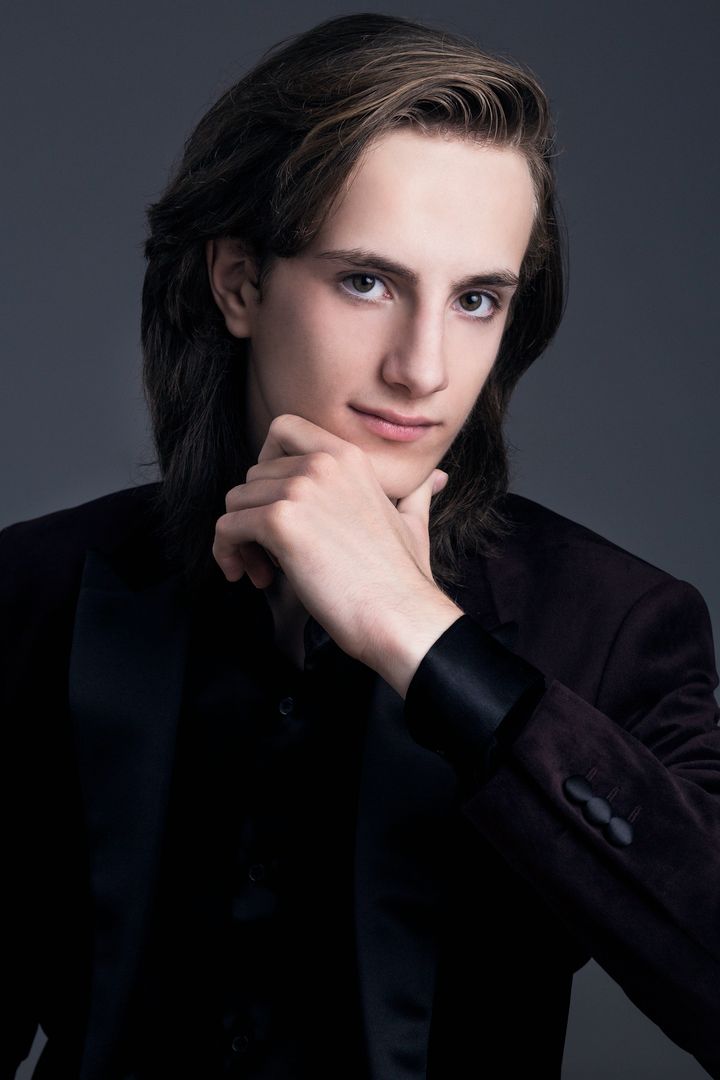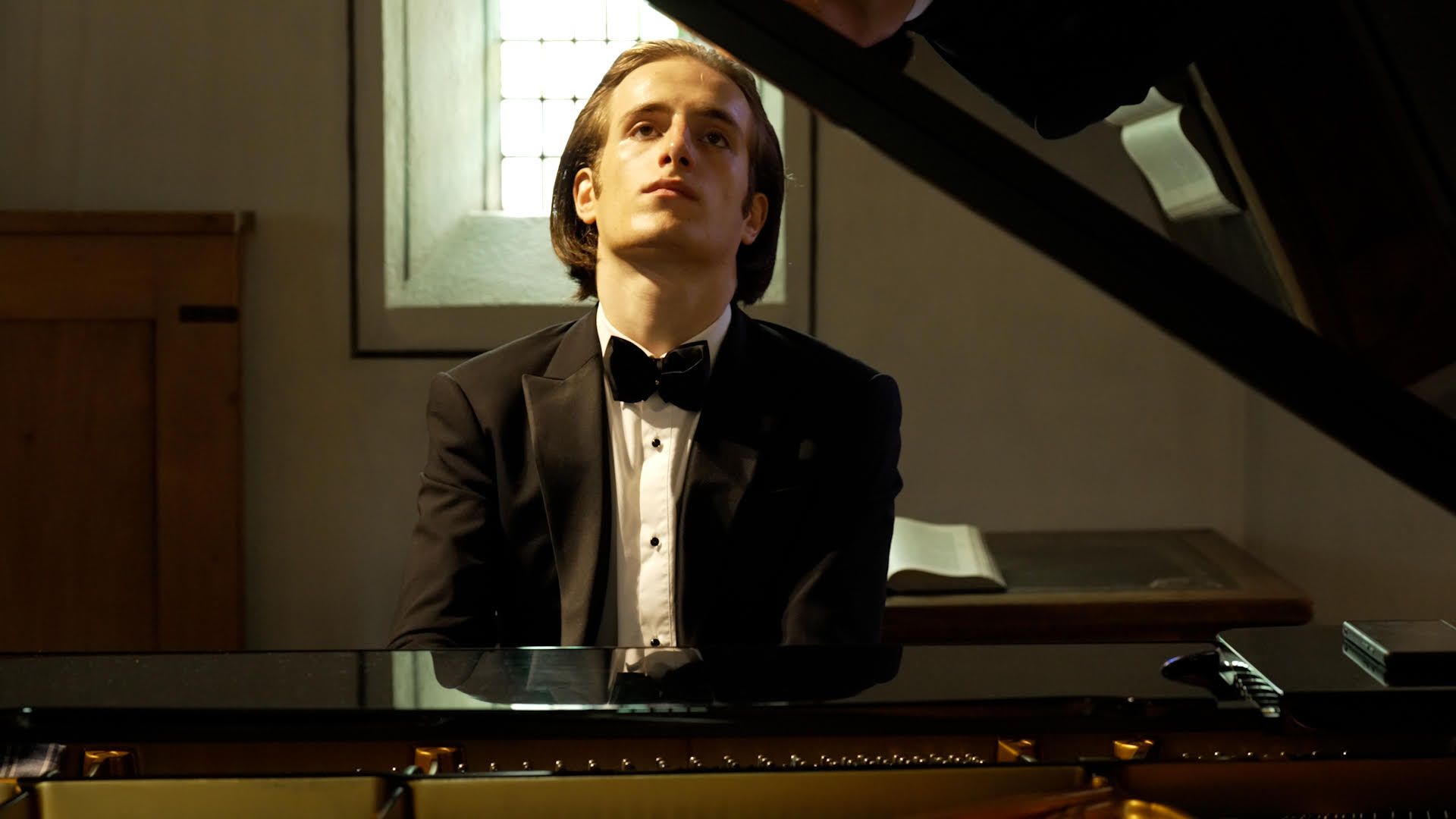Yoav Levanon at the Gstaad Menuhin Festival, 2023
There is no doubt that Levanon is a major talent

Menuhin Gstaad Festival 2023: Matinée des Jeunes Étoiles IV: Schumann, Rachmaninov Yoav Levanon (piano). Gstaad Chapel, Gstaad, Switzerland. 5.8.2023
Schuimann Symphonic Studies, Op. 13
Rachmanionov Etudes-tableaux, Op. 39 (selection, Nos. 1-6, 8, 9)
Performing the first version of the Schumannn Symphonic Studies, a handful of Rachmaninov Etudes-Tableaux and a Liszt Hungarian Rhapsody as an encore, Yoel Levanon offered a somewhat mixed recital. His strengths lay with the Rachmaninov and Liszt; but the Schumann was something of a curate’s egg of a performance.
Yoav Levanon’s Warner Classics disc, A Monument to Beethoven, has already attracted much critical attention. Levanon paired the Liszt B-Minor with the Schumann Fantasie. the Chopin Op. 45 Prélude, the Mendelssohn Variations sérieises and the Liszt ‘La Campanella’ study from the Etudes transcendentes d’apres Paganini. Certainly, Israel-born Levanon’s life has been that of a Wunderkind, with his public debut ath the age of three, and a Carnegie Hall debut at six. Much is made of his appearance (including in the Gstaad booklet) – modelled very much on the preferred looks of the heroes of the Romantic age. Here’s a video of Levanon recording that ‘Campanella’.
There was much to enjoy in the Gstaad Schumann. A late start and long silence before playing might have influenced Levanon (apparently latecomers was the reason for the initial delay, and people were still settling when he as sat, ready to start). In terms of piano tone, chord weighting, and tempo the Theme was emblematic of the entire performance: nearly there. Levanon could have drawn more body from the bass-end of the Steinway which would have resulted in a rounder sound; sitting near the front, it was just loud. This is a small chapel, and projection rather than volume is the key.
To his credit, Levanon took risks in his performance, bringing out the sheer imagination of Schumann’s piano writing. Crisp dots in the first variation, and a nice sense of line in the second followed. Sometimes the contradictions in his reading came simultaneously – brilliantly fantastical right-hand arpeggios set against a rather lacklustre mid-range melody, for example. The dotted, ‘French Overture’ Variation began in grand and regal fashion, but threatened to evaporate later, disjointed. The biggest miscalculation was the finale, notoriously difficult interpretatively. The many repetitions of material have to have a cumulative impact generated not just by what comes before, but also by a rock-solid rhythmic foundation. The big harmonic arrival counted for little in Levanon’s hands ,because structural factors were largely ignored. A shame.

The Rachmaninov was a different ball-game entirely. The first of the Op. 39 set of Etudes-tableaux was beautifully variegated and full of interpretative depth. Filigree was deliciously rendered but always as part of Raxchmaninov’s ongoing trajectory. Levanon treats Rachmaninvo as the major composer he is; at times this piece seemed almost Scriabinesque. Passagework flickering like a flame in the wind. The A-Minor second Etude-tableau was on an epic scale, beginning as an idyllic dream; but the left-hand's quoting of the ’Dies irae’’ is a hint as to its import. On a technical scale, Levanon’s trills were superbly tight and even. This was superb Rachnaninov interpretation, a seven-minute tone-poem. The third, the F sharp-Minor, was stormy, restless, dark. Again, on a technical level it was impeccable (the fluency of Levanon's left-hand scales a miracle); the neighbour-note melody, too, was superbly delineated against the flurry of inner voices. The fourth (B-Minor) was blessed with a cheeky staccato, perfect in all registers. There is no doubt of Levanon’s mastery of the keyboard, and not just in terms of prestidigitation; his ability to create infinite nuances of timbre is remarkable. E flat minor is one of the darkest of keys, and that of the fifth Etude-tableau, marked ‘Appassionato,’ its mid-range melody positively smouldering, while the positively Lisztian outburst of the opening of the sixth (A-Minor) heralded Rachmaninov in gestural, even angry, mode. There was some transcendental pianism here;; ye it was the way the music moved between angry and wistful so quickly that was truly impressive. No. 8, in D-Minor returned us to the Rachmaninov dream world, tender and beautifully voiced, volatile later. Finally, No. 9 in D, with something of Rachmaninov’s tolling bells in the mix, while the two-semiquaver anacrusis was ever perfectly articulated.
The encore played every inch to Levanon’s strengths: Liszt’s Second Hungarian Rhapsody. ‘We're going to have fun,’ suggested Levanon in a spoken introduction, while also reminding us that the music was used in a Tom and Jerry cartoon, Concert Madness. The actual performance was phenomenal – supreme Liszt style, and how clearly Levanon projected Liszt’s cimbalom references. And fun was, indeed, had by all; but how impressive, too, the serious opening, how clear the cimbalom references. It was clear, later, Levanon was having fun – as were we, the audience; the closing pages an explosion of virtuosity.
Play to your strengths is the clear advice here. The Schumann was, perhaps, prematurely before the public; both Rachmaninov and Liszt were heard in Levanon’s interpretative prime, while full of the energy of youth. In both of these composers, he proved his mettle in that he can show himself to be an ideal combination of interpretative insight and youthful élan. There is no doubt, though, that Levanon is a major talent
The recital may be heard at the Gstaad Menuin Digital Festival website, or by clicking this link.
